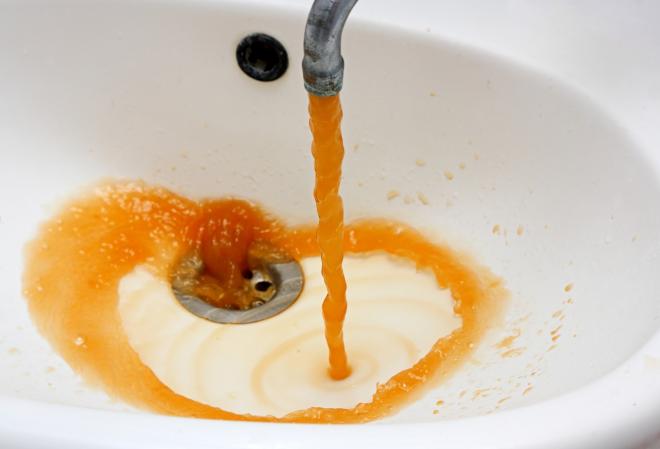Flint’s Poisonous Predicament
Only a measly 70 miles from the Great Lakes (the largest fresh water sources in the world,) citizens in Flint, Michigan no longer have access to clean tap water. In a bid to save state dollars, Michigan authorities stopped purchasing treated water from Detroit’s Lake Huron supply – instead relying on the nearby Flint River. What they failed to account for, however, was that the water from the Flint River was 19 times more corrosive than the treated water they were purchasing. Roughly 70% of water service lines in Flint are made of lead, which quickly corroded into the general water supply, turning the previously healthy water into a yellowish-brown substance. Unfortunately, that’s only where the problem begins.
The decision to switch water sources happened nearly two years ago, so why is this still unresolved? Whether from incompetence or in a desperate bid to save face, local authorities claimed there was nothing harmful in the water – even going so far as to have former Flint mayor Dayne Walling drink the lead-infested concoction on TV. For two years officials have been denying any harmful effects, but the sudden shift in gears comes as a result of local pediatrician Mona Hanna-Attisha. What she discovered was that blood lead levels in toddlers (which Medicare requires that states document) had doubled or even tripled in some cases since the change in water. Though officials tried denying it at first, soon enough they were forced to admit that she was correct – which leads us to the present predicament, where Obama has declared a state of emergency in Flint.
Flint has reverted to the old supply of Lake Huron already, but the damage has been done. The corroded pipes are still leaching trace amounts of lead into the treated water, though the levels are at least lower than before. Officials stated it will be quite some time before the lead completely leaves the piping. New Flint Mayor Karen Weaver estimated the cost of replacing the damaged pipes would total $1.5 billion – which just so happened to be the Powerball jackpot! Unfortunately, none of the 3 winners have stepped up. Instead, this cost will more than likely be forwarded to American taxpayers. But maybe the money they saved switching to the Flint River will make up for it? Not even close. Detroit’s supply of treated Lake Huron water cost about $100 a day. I’ve gone ahead and done the math for you on how much money they saved over two years. They saved about .005% of what this will end up costing just in fixing the pipes. Michigan Governor Rick Snyder has pledged to remedy this problem in his annual State of the State speech, while asking legislators for $28 million to fund a series of immediate actions. Among those would be providing bottled water to current residents, treating children affected by the increased lead levels, and replacing fixtures in high-risk locations such as schools. The speech seemed to have little effect, as protesters are still demanding his resignation.
This isn’t their only concern, though. According to local officials, 40% of residents are below the poverty line – and the city with 100,000 residents doesn’t even have a grocery store. Now, we’re seeing a lack of basic amenities, with no clear solution (or water) in sight. Obama has denied Snyder’s request to declare a state of disaster, but has nonetheless immediately freed up $5 million in federal funding, and sent in the National Guard to distribute bottled water to affected residents.

Hi! You must be really bored if you're reading this, but here we go. My name is Sebastian Lloret and I'm a Senior at Air Academy this year. I speak English,...













